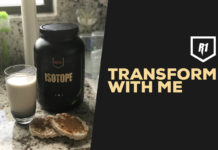
Now that everyone knows the benefits of meal prepping, we can break down some tips on Food Storage. When prepping for the week, the maximum that I recommend preparing in advance is 7 days worth of food. Keep up to 3 days worth of meals in the refrigerator and freeze the rest of the meals.
The temperatures of your refrigerator and freezer, as well as the types of containers you use, are vital in preserving freshness of your meals. Your refrigerator temperature should be 40F or below and your freezer should be at least 0F or below. If you are preparing several hot meals, you should allow the meals to cool down (nearly to room temperature) and then store them in the refrigerator or freezer within 1-2 hours of preparing. This prevent the build of moisture for freezer burn while also helping things not to dry out.
Glass containers are great to have in the fridge because you can see the contents and they generally can be used in most microwaves. If you use a plastic container, just make sure it is BPA free. If you are going to freeze your meals, make sure the containers are air tight! If not, the food may be susceptible to freezer burn and taste like ice by the time you reheat and eat the meal.
When defrosting your meals, I always recommend defrosting in the fridge the night before you are going it eat the meal. It takes longer, but really, it has the less risk associated with it. Be careful if you’re planning to use the microwave to defrost your meals. Often times the microwave will heat food up pretty quickly and if there was any bacteria on/in the food, it can start to multiply or spread. Plus, some parts of the meal will be frozen while others remain warm so part of your meal can be overcooked.
While there are concerns about both the health risks associated with high-level exposure to microwaves, less is known about the low-level exposure. The FDA reports that scientific questions still remain as to the effects of low-level exposure to microwaves but generally people should practice common sense. Other options to reheat your food include: convection ovens, stovetops, crockpots, rice cookers and ovens. But, sometimes the microwave is all you have. There are some tips to remember: Use glass containers whenever possible. Use BPA free plastic. Often times the food can get so hot that it melts the plastic material. Substances and chemicals used in the manufacturing of the plastic can leak into your food and cause severe health concerns.
While you can generally be flexible about which foods to prep, there are a few that aren’t as good for meal prepping. Fresh fish loses a lot of texture once it’s been stored in the refrigerator and it often doesn’t reheat well. You can probably get away with reheating fish in a sauce at home, but do your coworkers the courtesy of not reheating fish in the break room microwave! If you’re looking to get in your omega-3s at the office, it might be best to stick to canned tuna and salmon.
Saucy pasta dishes can also be tricky to store. If you store the components separately, you may end up with dry pasta. If you store the pasta already sauced, the pasta ends up absorbing all of the sauce. For meal prep purposes, it’s probably best to stick to recipes for pasta salad that are meant to make leftovers. Otherwise, you can try coating your plain pasta in olive oil and storing it separately from your sauce.


















